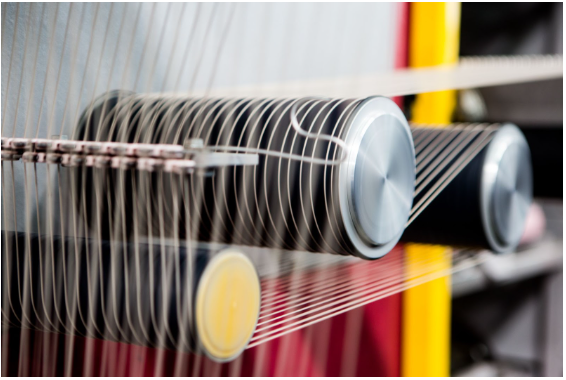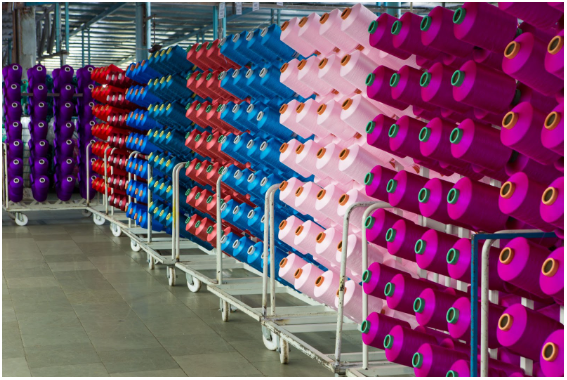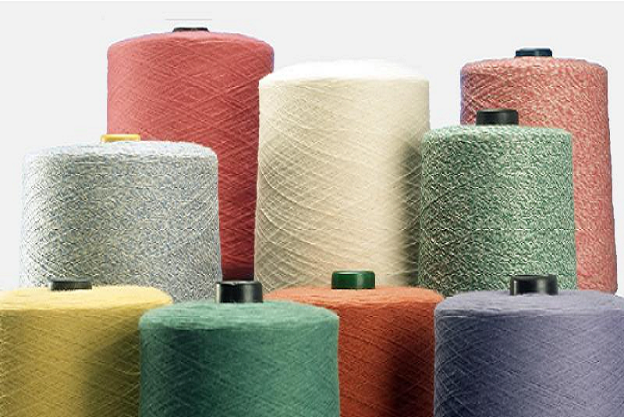Yarns are coated with thermoplastic polymers or other materials to create a high-performing and versatile final product. This product can, in turn, be utilised by a wide range of industries, and its versatility is used in a variety of applications in multiple sectors. Whether it is for brilliant looks or industry operations, coated yarns provide high-grade solutions for textiles, indoor and outdoor furniture, accessories, travel bags and more. Coated yarns are a popular choice in many industries due to their superior quality, softness, abrasion resistance, anti-bacterial properties, and chemical and germ resistance. They are also available in various versions, such as special glitter, photoluminescent and photochromatic.
Coating polymers used in yarn coating
Various polymers and metals are used in yarn coating and then supplied for industrial use. Coating yarns require a combination of cores and coats that eventually form a coat over the fibres. Cores can include polyester filament, nylon filament, carbon fibre, glass fibre, graphite, basalt and more, while the coats can be polypyrrole, thermoplastic polyurethane and EVA, to name a few.
Methods and machinery for yarn coating
Dip coating
Dip coating is a popular way to produce coated yarns. It is especially used to create thin film coated materials. The process involves the immersion of substrates into a tank filled with the coating material of choice, then removing them from the tank once they are coated and then allowed to dry by baking or force-drying. This process typically happens in three phases.
Phase 1:
The substrates are immersed at a vibration-free, constant speed at pre-determined conditions such as liquid temperature, coating solution type and more.
Phase 2:
The phase requires a waiting duration, which allows the coating solution to settle on the substrates. During this phase, the apparatus and the substrates are motionless.
Phase 3:
Once the coating solution is settled on the substrates, they are removed at a constant and vibration-free speed.
Thermoelectric process
Yarns can be coated through a thermoelectric process. This method uses a thermoelectric coating material, which is water processable and produced from the waterborne polyurethane, PEDOT:PSS composite and MWCNT. Once the conditions like room temperature and electrical conductivity are optimised, the strands of yarns are dipped into the liquid. This water-based composite coats yarns like polyester and cotton. Although, this process works better on polyester yarn than cotton yarn.
Coating yarns with Polypyrrole
Several ways are used to coat yarns with Polypyrrole.
For polyester yarns
Method 1: Chemical synthesis
For nylon yarns
Method 1: Chemical synthesis
Method 2: Vapour polymerisation
For cotton yarns:
Method 1: Vapour phase polymerisation
Method 2: Synthesisation by chemical processing
For woollen yarns:
Method 1: Chemical synthesis
Method 2: Vapour polymerisation
Applications of coated yarns
Textiles made of coated yarns are used for a variety of technical purposes, such as antistatic films, wearable sensor devices in biochemical monitoring and electromagnetic interference shielding sensors and devices. They are also used for military purposes along with heating applications. Applications of coated yarns are immense and include:
- Nets and ropes production
- Filtration systems
- Car seatbelt fabrics
- Ballistics sector
- Composite materials
- Aerospace
- Military
- Healthcare
- Protection gear
- Furnishing
- Boating
- Fashion
- Infrastructure & telecommunication
- Accessories
Conclusion
AYM Syntex is a top manufacturer of specialty yarns and multi-polymer yarns like polyester, nylon and PP. We make high-tenacity yarns that can be coated and then utilised by a wide range of industries. Reach out to us for excellent quality synthetic yarns.
Also Read:
i.Twisted Yarns – Importance & Benefits
ii.Benefits of Polyester Yarn




